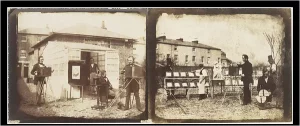Calotype and the Negative-Positive Process (1835 Onwards)
The invention of the Calotype and the negative-positive process marks a defining chapter in photography’s history, a revolutionary leap that transformed it from a singular curiosity into a reproducible art form. Conceived by William Henry Fox Talbot in 1835 and refined for public unveiling in 1841, this technique introduced the groundbreaking concept of creating multiple prints from a single negative. Unlike the Daguerreotype, which dazzled viewers with its sharp, unrepeatable brilliance, the Calotype offered a softer, more versatile vision. It laid the essential groundwork for modern photography. Talbot’s innovation didn’t merely capture light, it harnessed it, turning fleeting moments into stories that could be shared and preserved through time.
